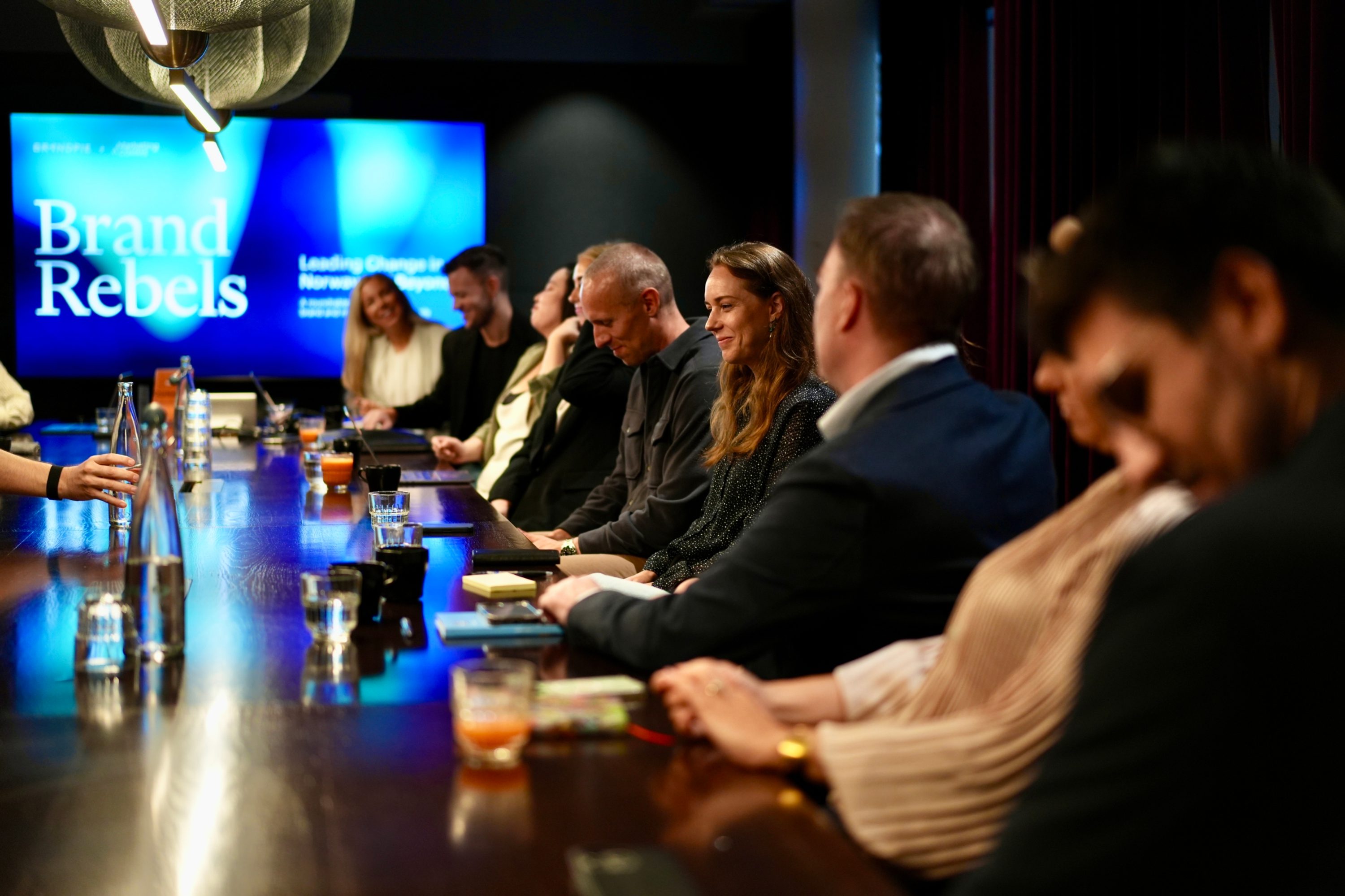
Artificial intelligence (AI) is unavoidable. It’s in the boardroom, in workflows, in the pitches that shape billion-dollar decisions. The question for marketing leaders is no longer if you use it, but how you stop it from eroding the very thing brands exist to protect: difference.
At a recent Brand Rebels roundtable, CMOs, brand heads, and communications leaders debated what AI really means for brand. Their unfiltered verdict? AI is both the accelerant and the acid. Handled well, it frees creativity. Left unchecked, it reduces everything to a blur of sameness.
Here are the five tensions we uncovered, and what marketers must do about them.
1. The tightrope: innovation vs. control
The most immediate tension is between moving fast and staying safe.
“We’re in the exploration phase,” said one marketing leader “but governance and risk loom large. Microsoft and Google have advised us on what’s ‘safe,’ but compliance can feel like a brake on innovation”.
This is the paradox: while AI opens doors to faster execution and sharper insights, unchecked usage – an image that slips through, a misaligned tone of voice, or a hallucinated fact – can torch trust in a heartbeat.
Leaders who set clear guardrails create confidence. That means establishing an explicit internal policy for AI: where it’s encouraged (for example, first-draft ideation, workflow efficiency) and where human oversight is non-negotiable (customer comms, investor material, legal or regulatory messaging). Guardrails define not just what’s allowed but what’s encouraged, giving teams freedom to explore without fear of overstepping.

2. The tools tsunami: from overload to trust
The explosion of platforms has left many teams paralyzed. “Just when we think we’ve found the best tool, a new one appears the next week,” commented one guest.
For global teams, the challenge multiplies: digital literacy varies wildly across markets. “AI is creating a gap between those who dare and those who don’t,” warned another leader. “Over time, that gap will show in effectiveness and quality”.
The CMO’s role is to curate, not chase. By selecting a handful of trusted, business-aligned tools and embedding them into workflows, leaders can build organizational confidence. The message must be clear: these are the tools we trust, and here’s how they make us better.
3. The differentiation trap
Marketing exists to stand out. Yet AI, paradoxically, risks making everything look the same. One Brand Rebel observed “Sometimes I read LinkedIn and everything sounds the same.”
Others echoed the fear: AI-generated copy and imagery can feel polished but generic, with telltale “AI mannerisms.” As one participant put it: “We see the brand losing itself. Social media posts from Argentina to China all carry the same bland phrasing. That’s not authenticity”.
When mediocrity is automated, originality becomes priceless.
Invest where machines cannot ¬– differentiation now lives in tone-of-voice, in creativity, in the emotional resonance that only humans can bring. Demand that every output answers a simple question: does this sound like us, or like everyone else?
AI is creating a gap between those who dare and those who don’t. Over time, that gap will show in effectiveness and quality.
4. Creativity: stimulus, not substitute
If there was one consensus around the table, it was this: AI cannot replace creativity but it can fuel it.
Leaders described using AI as a “creative sparring partner” or a way to clear away drudge work. One CMO put it bluntly to his team: “Find the 60% of your job that sucks and AI can take that away. I’ll give you better work to do instead”.
The real value lies in using AI to spark, not to settle. “AI is good at being efficient,” said one agency leader, “but it would replace us only if what we did was easy and straightforward. What we do – building trust, confidence, and relationships – is complex. That can’t be automated”.
Reframe AI as an accelerator of human imagination. The best creative leaders will use it to test more ideas faster, sharpen briefs, and give their teams freedom to do the work that truly differentiates.
5. Accountability: the missing human factor
The discussion surfaced an uncomfortable truth: AI hallucinates.
From a Brazilian municipality issuing legal advice seemingly drafted by ChatGPT, to a corporate comms leader discovering that AI had silently changed the moderator’s questions for a CEO panel, the stories were sobering.
“When it goes wrong, you can’t exactly say, hey, can we have a chat? What did you base this on? There’s no accountability,” said one participant.
This is where highly skilled, experienced people matter most. Human-in-the-loop oversight is non-negotiable, particularly in complex business moments where nuance, credibility, and judgment define success. CMOs must remain the final arbiters of truth, brand integrity, and stakeholder trust. Accountability cannot be outsourced to a machine.
AI is good at being efficient but it would replace us only if what we did was easy and straightforward. What we do – building trust, confidence, and relationships – is complex. That can’t be automated.
6. The missing piece: emotional intelligence
The final verdict? Emotional intelligence lies firmly in human hands.
The CMO’s role is not just to produce messages, but to know which story will land. That takes interaction and a real grasp of human drivers of preference, which no algorithm can automate.
This is why authentic human insight is non-negotiable. Test messages not just through dashboards but in live conversations with customers, employees, and investors. Trust the signals you see in their eyes, not just the numbers on the screen.
For brand rebels everywhere:
AI is here to stay. As one Microsoft advisor put it: “If you don’t start using it, someone else will outsmart you”.
But adopting AI is not the same as abdicating leadership. The most forward-thinking CMOs are already shifting their role from AI adopters to AI orchestrators.
That means:
- Set hard guardrails. Say where AI belongs and where only humans can decide.
- Stop chasing new tools. Curate a few that matter and make them law.
- Defend your edge. Guard authenticity, tone, and creativity. If it sounds generic, it isn’t your brand.
- Use AI as stimulus to spark ideas, never as the substitute for them.
- Own the blame. Accountability can’t be outsourced.
- Make it human. Pair data with emotional intelligence – connection lives in empathy, not algorithms.
AI may reshape how marketing is done, but it won’t change why it’s done. The heart of marketing is not efficiency, but meaning. Not scale, but connection.
One participant put it best: “Everyone can deliver mediocre, cliché stuff. The chase for greatness really starts now”.
Everyone can deliver mediocre, cliché stuff. The chase for greatness really starts now
Brand Rebels is a community for changemakers. Leaders who use brand to drive real, meaningful change from the inside out. It’s not just for marketers, but for anyone pushing for clarity, alignment, or momentum at pivotal business moments. A CEO can be a Brand Rebel. A product lead. A transformation exec. What unites them is a belief that brand isn’t just communications – it’s a lever for impact. Brand Rebels exists to bring fresh thinking, honest conversations, and bold ideas out of the marketing bubble and into the boardroom.



